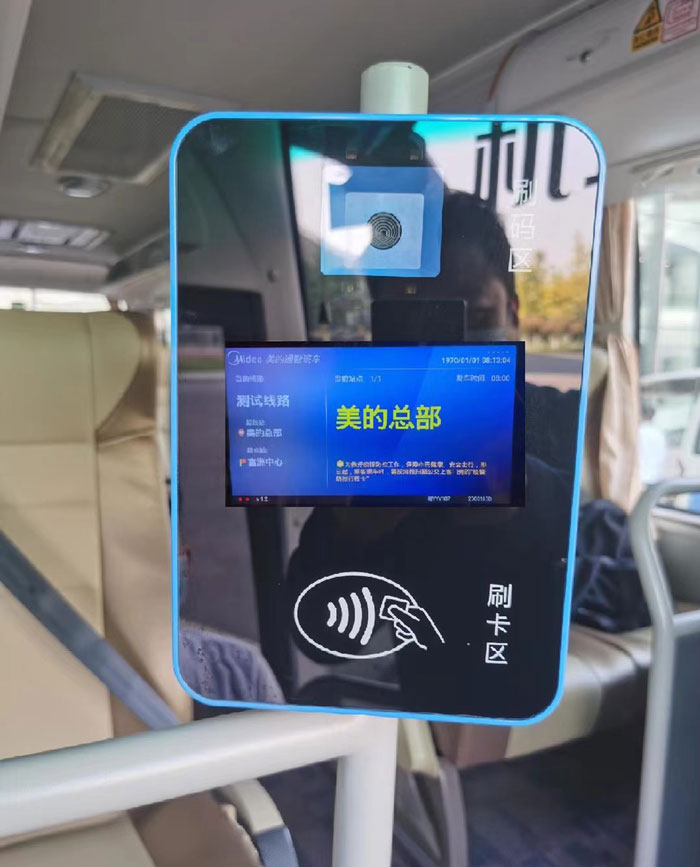In modern urban transportation, efficient operation and passenger satisfaction of bus lines face many challenges, such as congestion, peak-hour pressure, and inefficient dispatching. In order to improve service quality, bus systems have introduced technologies such as bus ticketing system. These devices not only simplify the payment process, but also help bus operators collect and analyze passenger data to develop more intelligent operation strategies. QR code scanners and card readers are gradually becoming key technical tools for optimizing bus services.

QR code scanners and card readers play a core role in bus payment systems. Passengers can make quick payments by scanning codes or swiping cards, without carrying cash or paper tickets, which greatly improves the convenience of travel.
- QR code technology: QR code scanners can read 2D barcodes and are widely used for mobile payments. For example, passengers generate QR codes through WeChat or Alipay and scan them when they get on the bus to complete the payment.
- RFID card reader: RFID technology is used to read bus cards, identifying passengers through radio frequencies and deducting fees. In addition, NFC (Near Field Communication) technology is also widely used, especially in smartphones, where passengers can complete payment by simply placing their phones close to the card reader.
Through these payment methods, the bus system not only improves payment efficiency, but also reduces passenger waiting time, further optimizing the riding experience.
The application of bus ticketing machine is not limited to payment, they are also important data collection tools. Bus operators can collect a large amount of passenger behavior data through these devices, including:
- Passenger flow: Identifying the number of passengers on a certain bus route or a certain time period helps operators understand the difference between peak and off-peak hours.
- Boarding location and time: By analyzing the boarding location and time, it can help bus companies identify which stations have greater demand and which time periods need to increase the number of buses.
These data are usually stored in the cloud and processed through big data analysis technology to provide decision-making basis for bus route optimization and service improvement.
Based on the data collected by QR code scanners and card readers, bus operators can formulate more flexible scheduling strategies.
- Bus route optimization: By analyzing passenger flow and boarding time, bus routes can be reasonably adjusted to increase the number of vehicles at high-demand stations or reduce the number of buses at low-use routes.
- Dynamic scheduling: The bus system can flexibly arrange bus trips and schedules based on real-time data to ensure increased vehicle supply during peak hours, avoid congestion, and improve passengers' travel experience.
- Intelligent bus system: With the help of artificial intelligence and big data technology, the bus system can automatically optimize scheduling to achieve efficient management and reasonable allocation of resources.
Real-time feedback is the key to bus system optimization. Through real-time data feedback from bus validator, bus companies can dynamically adjust bus trips and routes.
- Bus scheduling: For example, if there is a sudden increase in passengers during a certain period of time, the system can add vehicles in time to ensure that passengers get on time.
- Avoid peak-time congestion: By predicting peak hours in advance, bus companies can schedule in advance to avoid station congestion and improve traffic smoothness.
- Intelligent traffic management: The real-time feedback mechanism enables the bus system to continuously optimize vehicle scheduling, reduce the phenomenon of empty vehicle operation, save energy, and improve overall operational efficiency.
With the advancement of data analysis technology, bus systems can provide more personalized services for passengers. For example, the system can recommend the best bus routes or notify route changes based on passengers' daily travel habits. In addition, smart bus systems can provide more value-added services based on passenger needs, such as pre-booking seats and priority boarding.
In the future smart city, QR code scanners and card readers will not only be used for payment, they will also be connected to more IoT devices to help city managers monitor traffic flow, reduce traffic accidents, and improve the overall operational efficiency of the city.
The importance of bus ticket scanner in bus line services is becoming increasingly prominent. These devices not only simplify the payment process for passengers, but also provide valuable data support for bus companies. By analyzing these data, bus companies can continuously optimize routes and scheduling to improve passengers' travel experience. At the same time, data-driven traffic management is becoming an important part of modern bus systems, which helps to continuously improve bus services and promote the development of intelligent traffic management.
By introducing QR code technology, RFID readers and real-time data feedback systems, future bus services will be more efficient and intelligent.